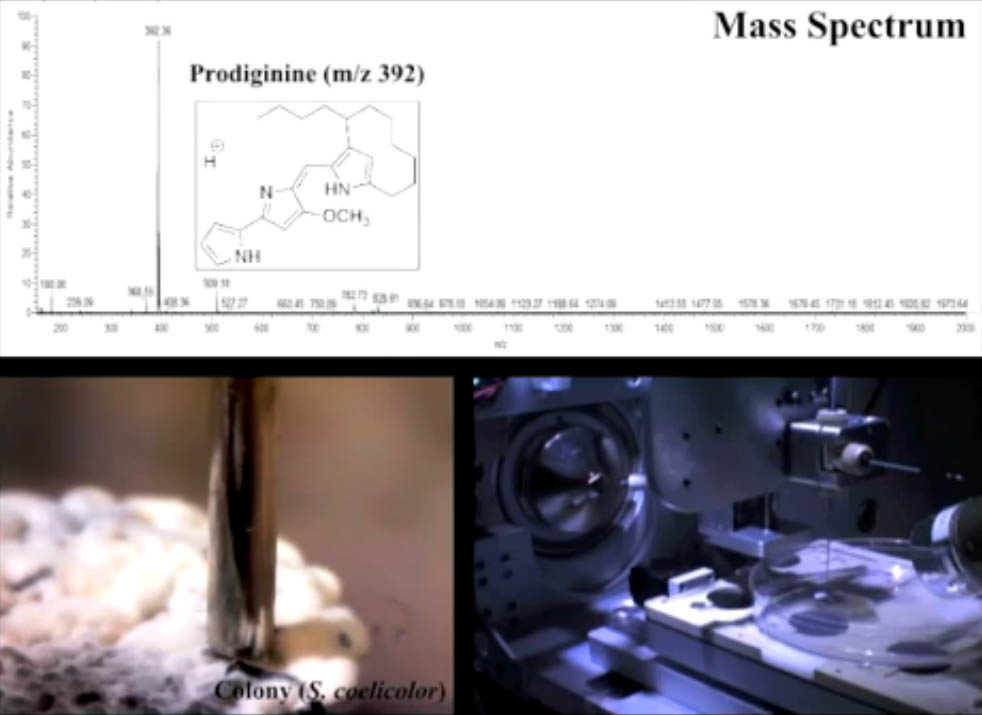Real-time Mass Spectroscopy on Live Microorganisms


A thin capillary probe injects solvent onto a colony of Streptomyces coelicolor (inset), collects compounds secreted by the cells, and sends the samples to an electrospray ionization mass spectrometer (MS).
Researchers at University of California, San Diego are reporting success on a real time mass spectroscopy technique where in compounds from live microbes can were successfully analyzed without harming them. As opposed to the current practice of using vacuum which kills the microorganisms or separating the bacteria from the compounds before analyzing. The new technique called ambient electospray ionization (ESI) will be a huge time saver for researchers searching for novel compounds from microorganisms, helping them take quick snapshots of a colony’s molecular profile.
This real time mass spectroscopy technique was adapted from a similar technique developed at the Oak Ridge National Laboratory to analyze interactions between proteins and antibodies. However, until now no one had used the same technique to analyze compounds from living microbes. The team lead by Pieter C. Dorrestein previously had tried unsuccessfully to analyze compounds from living microbes using nanospray desorption electron ionization.
The technique uses a smaller 245 mm diameter capillary flow tube nested inside a 330 mm diameter capillary. The solvent continuously flows down from the gap between the capillary tubes and onto the colony, where it gets immediately vacuumed up via the smaller capillary flow tube. It carried along with it dissolved metabolites which are read by a conventional electrospray ionization mass spectrometer.
Read more about it in the paper here.
